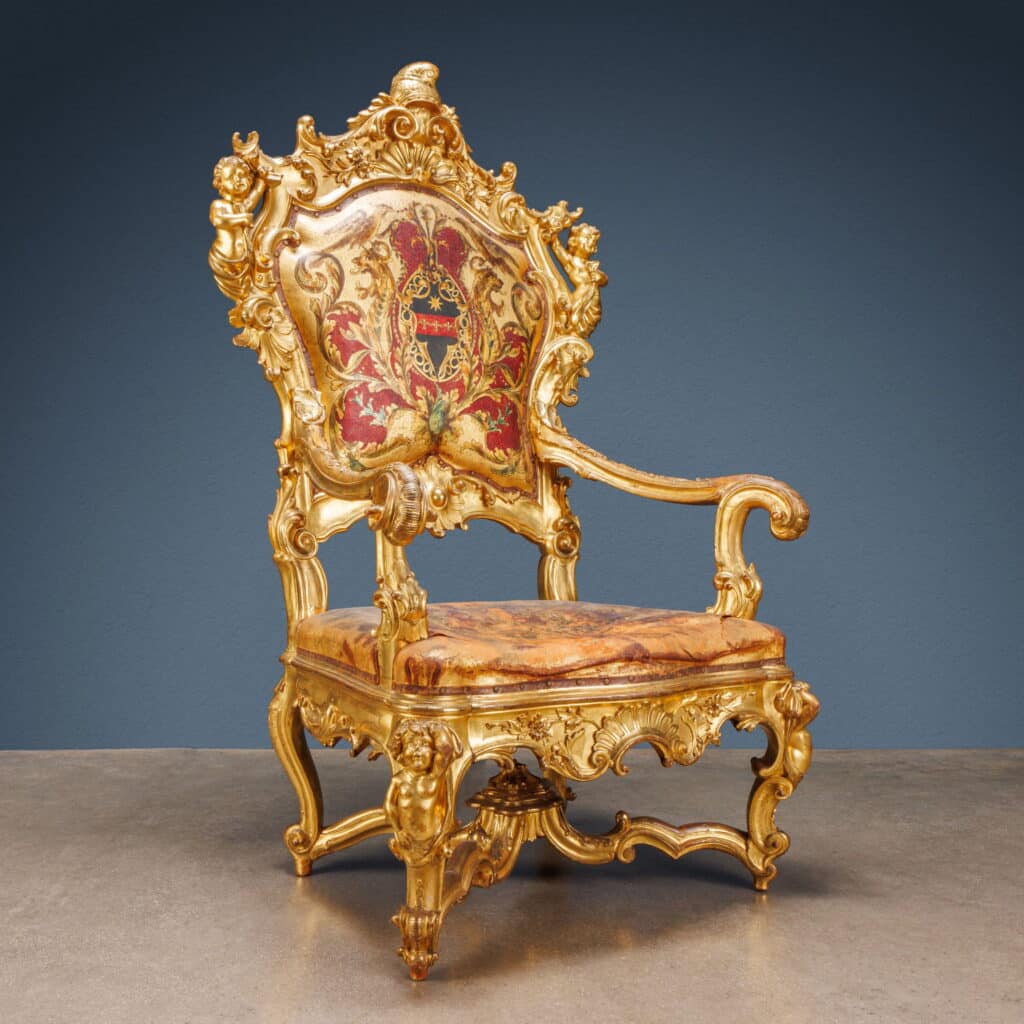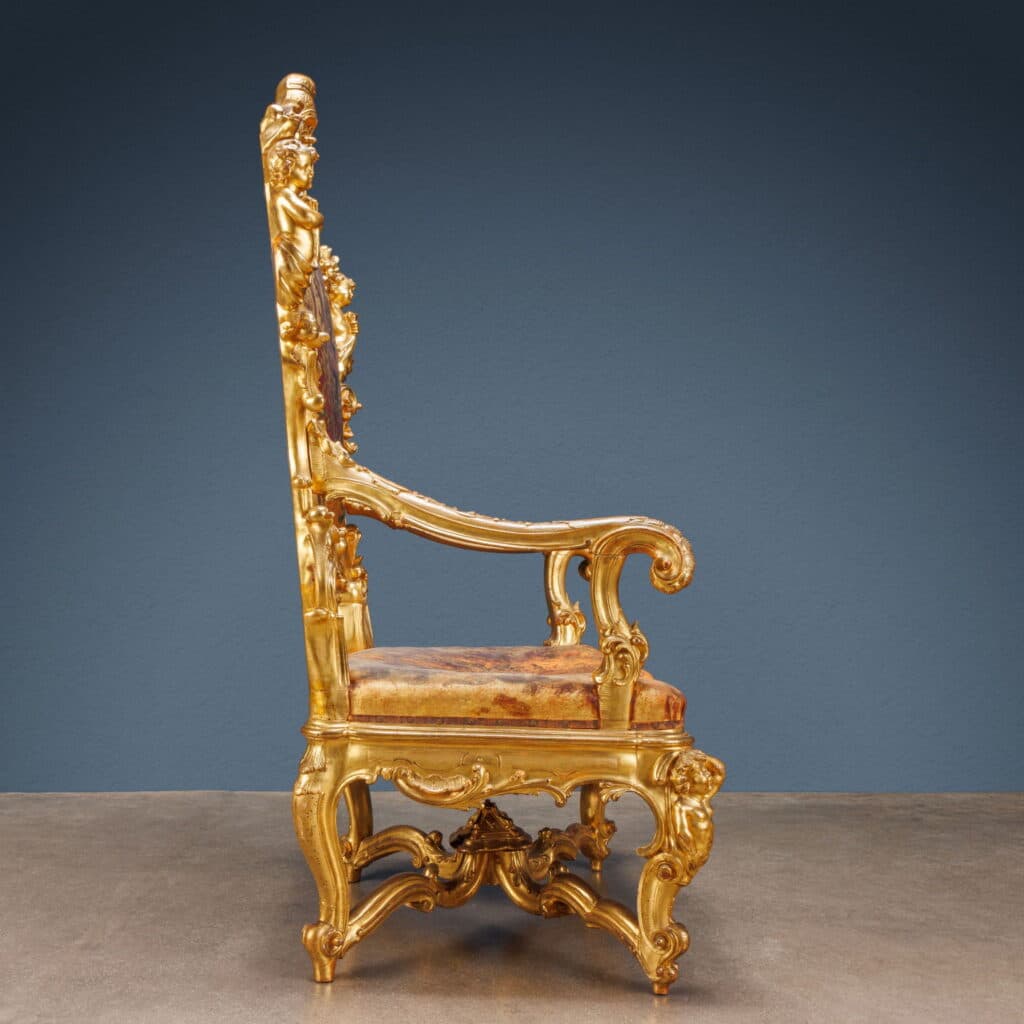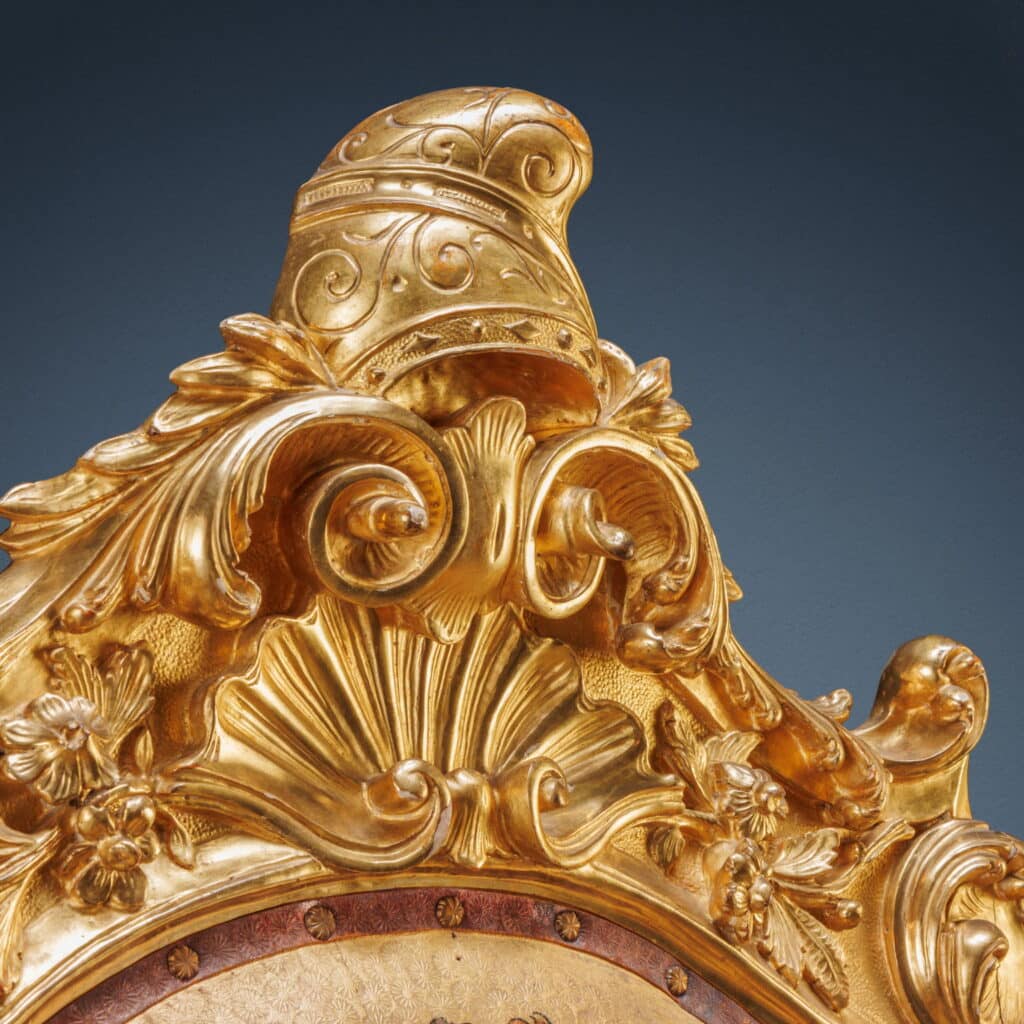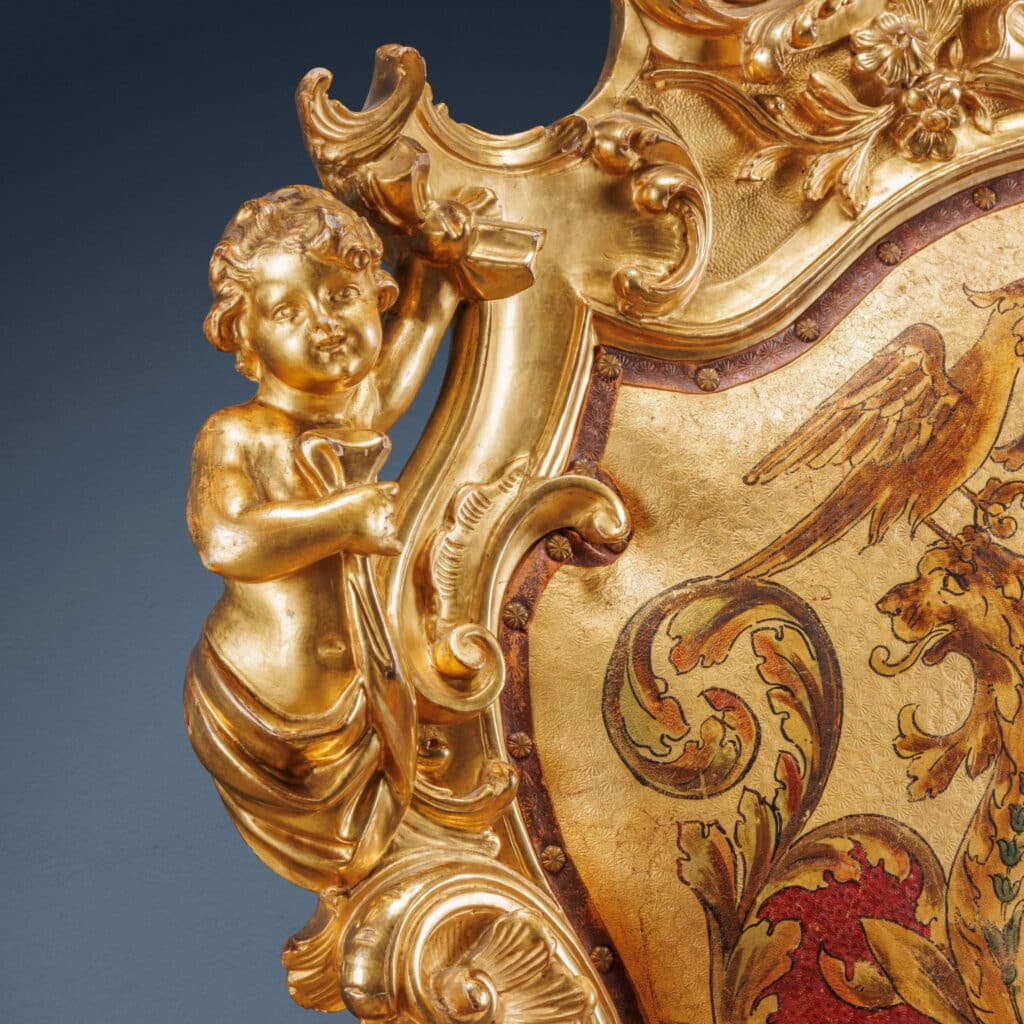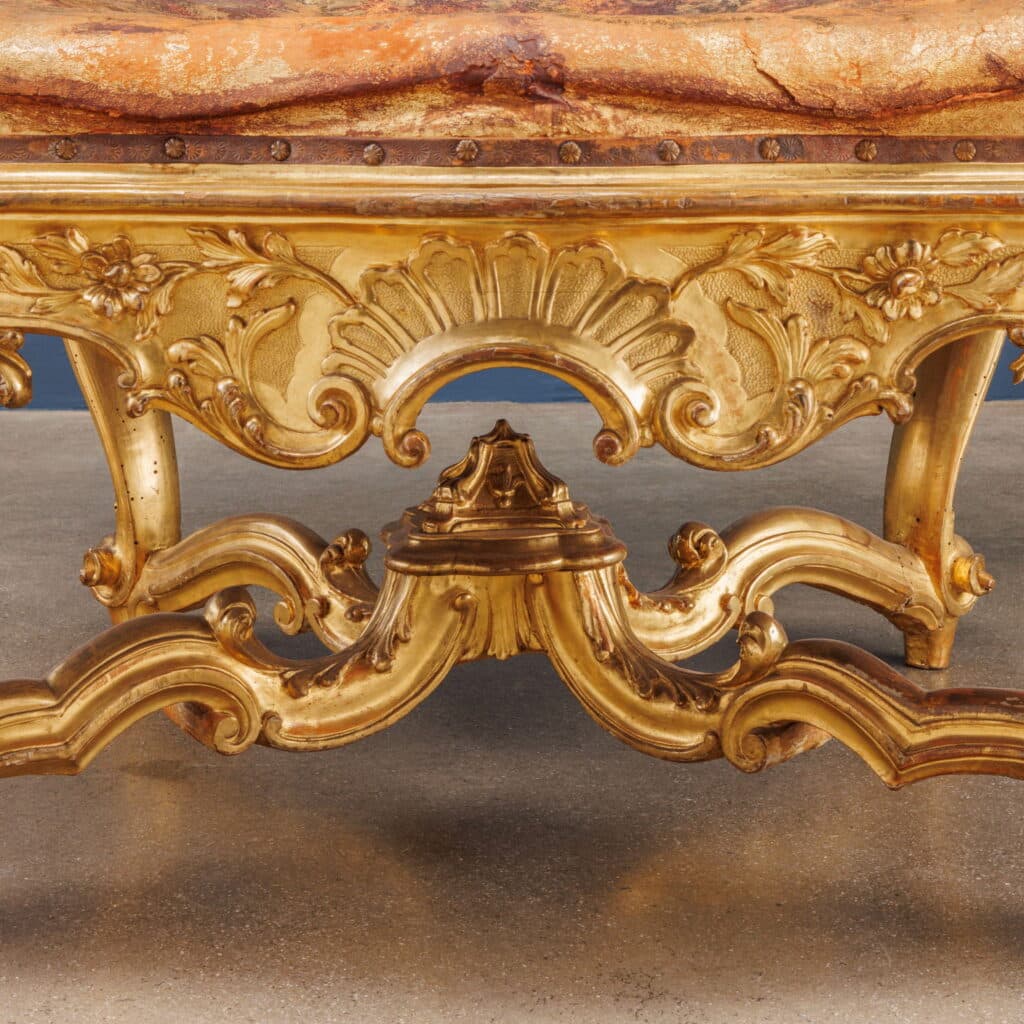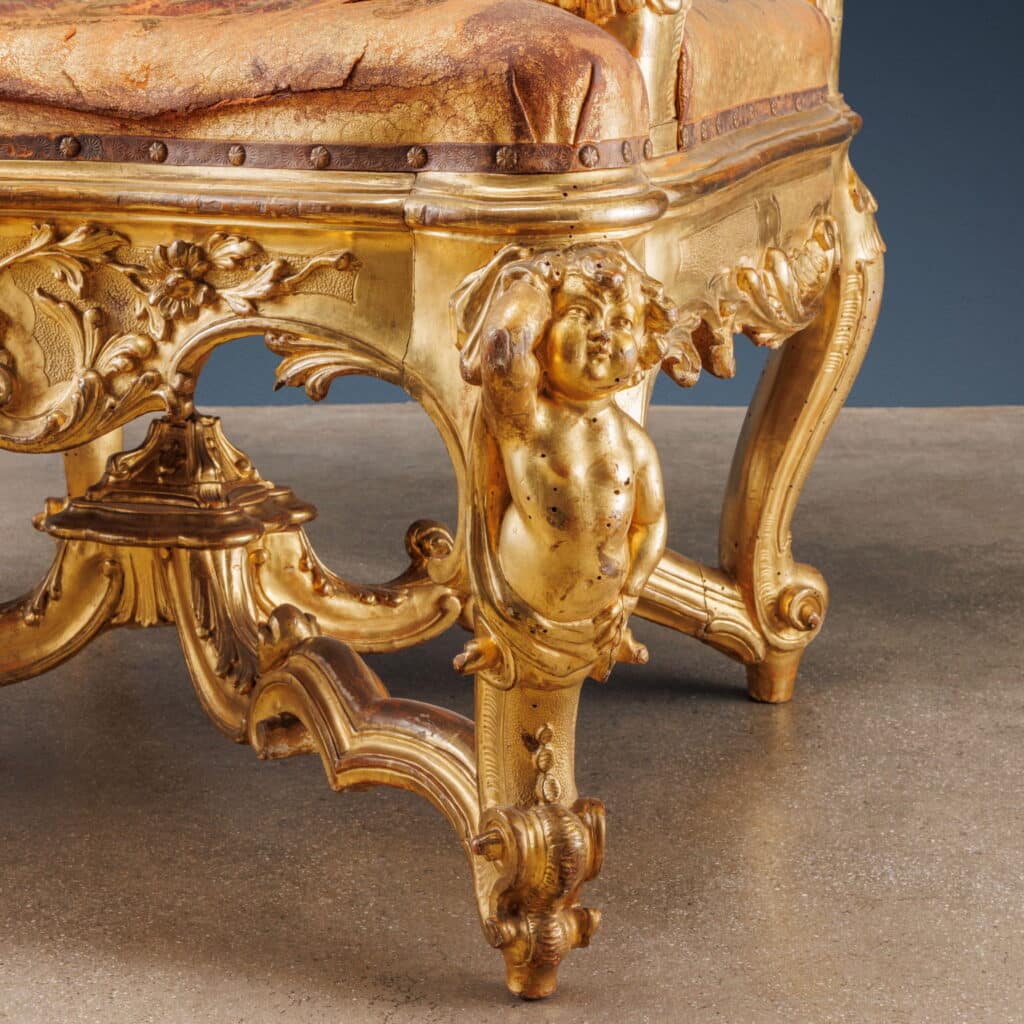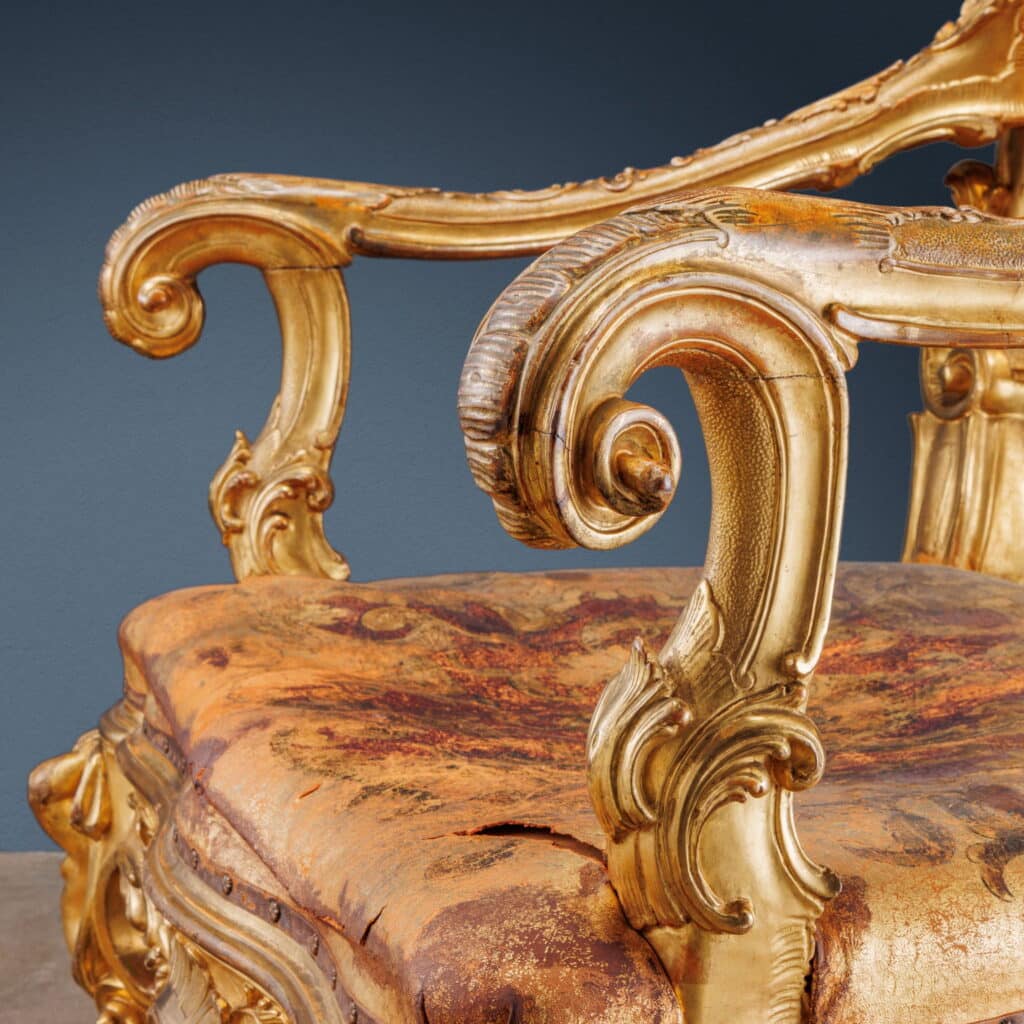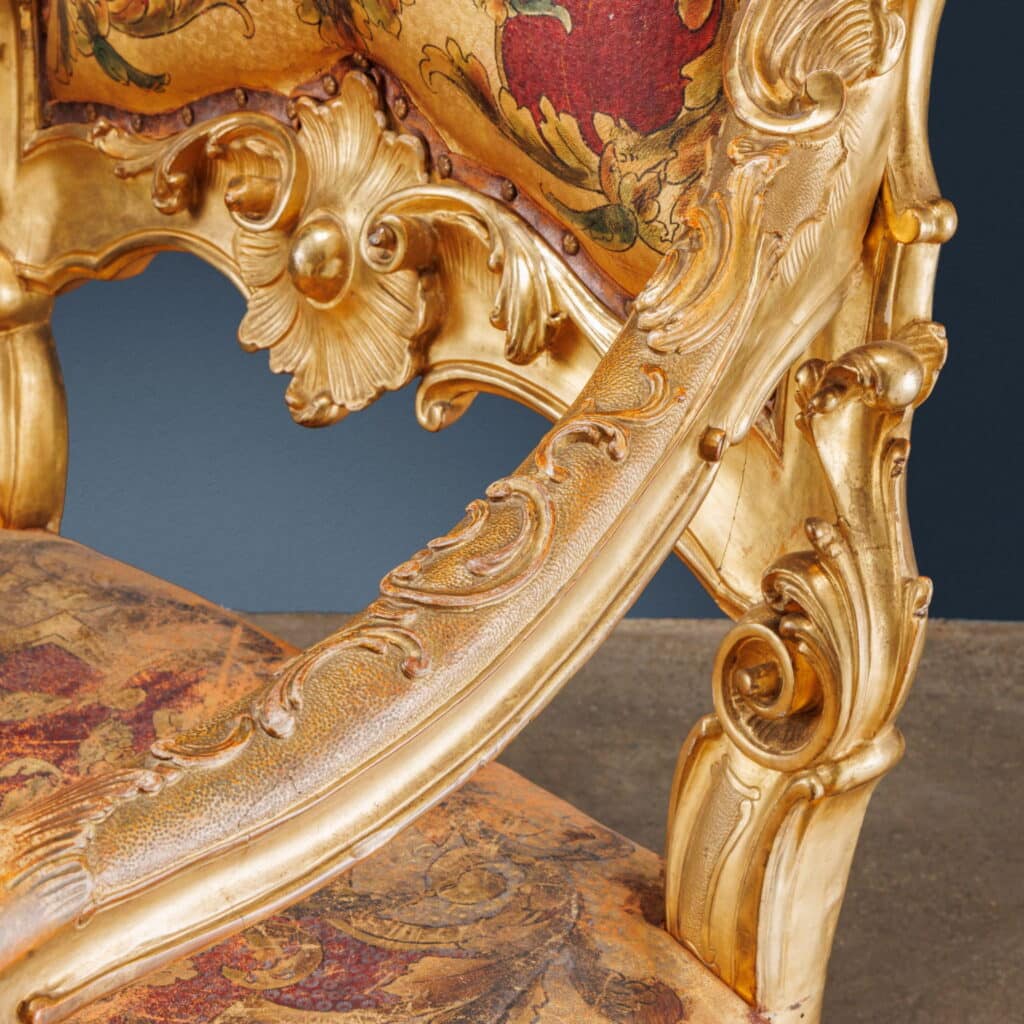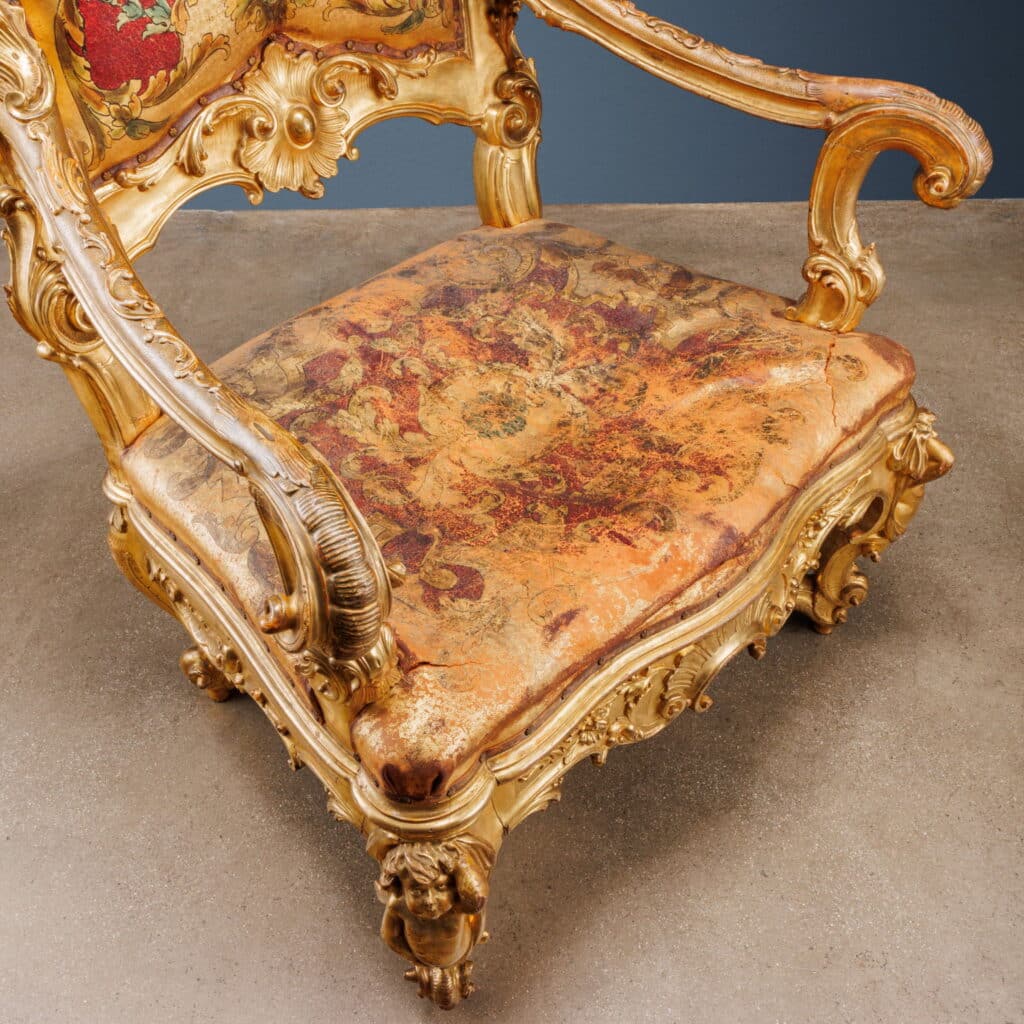Throne, Venice last quarter of the 19th century Attributable to Valentino Panciera, known as “Besarel”
Description:
Large carved and gilded throne. Four wavy legs connected by a cross support the seat with shaped back and wavy armrests; the entire surface is carved with architectural, floral and “rocaille” motifs, alternating with burin-worked reserves; pairs of caryatids carved with cherubs decorate the front legs and the backrest, on the top is the dogal horn carved with refined embroidery. The backrest and seat are padded and upholstered in worked leather, gilded and painted with scrolls and birds, in the center of which is a coat of arms on a blue field divided by a red band with three golden lilies and an eight-rayed star in the upper part.
Dimensions: cm. 170x98x74
CODE: ANSESE0148124
Historical-stylistic analysis:
The armchair in question is a copy made in the second half of the nineteenth century, which takes as its model an important harness formerly Donà delle Rose, now partly present in Cà Rezzonico, Venice. The original finish, whose armchair was repeatedly published in the texts of Venetian production, has an attributive history that was finally dissolved by Alvar Gonzalez-Palacios in “The temple of taste”. In the second half of the 19th century, various carvers in Venice dedicated themselves to reproposing eighteenth-century furnishings, the most famous was undoubtedly Valentino Panciera Besarel (1829-1902).
He was a carver of undisputed ability already in his time, so much so that he was requested by the most important families and by Queen Margherita herself, who in 1888 commissioned him a finish inspired by the productions of Brustolon. The furniture, which includes armchairs and tables, is now in the Palazzo del Quirinale and is an evident homage to the Venier harness, now kept in Cà Rezzonico. He was also engaged for the Palazzo di Monza for the royal house, but the orders for furniture from that moment on were many; he participated with furniture and armchairs, again in 1888, also in the Exposicion Universal de Barcelona.
Having no visible documents or signatures on the armchair in question, it is not possible to attribute it with certainty to the production of Besarel, but it seems to us that today there is no more credible hypothesis. In the event it should certainly be a realization made in the wake of the productions now at the Quirinale and therefore in the last decade of the nineteenth century.
Comparison biography
Alvar González-Palacios, Il Tempio del Gusto, La Toscana e l’Italia Settentrionale, ed. Longanesi 1986
G. Morazzoni, Il Mobile Veneziano del ‘700, ed. Gorlich 1958, tav. CLIX
Clelia Alberici, Il Mobile Veneto, ed. Electa 1980, pag. 242
Giovanni Angelini-Ester Cason Angelini, Gli scultori Panciera Besarel di Zoldo, ed. Provincia di Belluno 2002
- Throne, Venice last quarter of the 19th century Attributable to Valentino Panciera, known as “Besarel”

Antiques, Art and Design
FineArt is the new ambitious Di Mano in Mano project that offers an exclusive choice of antiques and design works, presenting them for their singularity and uniqueness.

